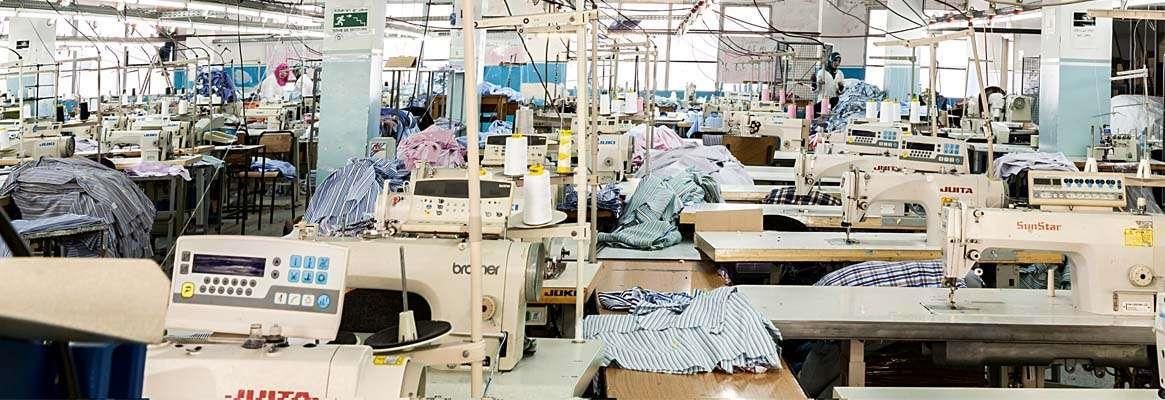How are apparel sourcing enterprises tackling the impact of the COVID-19 pandemic?
The COVID-19 pandemic has brought us to a moment that is not just unprecedented in its global impact but also daunting in the uncertainty of an evolving health crisis and subsequent contracting economic activity. It is teaching us many lessons, not the least of which are courage and resilience—lessons brought home to me personally by friends in India and overseas who unfortunately did find themselves battling the infection. I have been overwhelmed by the courage and endurance they have demonstrated on the path to recovery. Through them, I have learned valuable lessons on moving from anxiety to determination in overcoming this deadly infection.
The loneliness of being sequestered, as people tried not to pass on the infection to loved ones and finally learning, at the core of their being, that with recovery and health one can endure and tackle the next battle we face—an economic one.
The industry too is made up of such resilient fighters, who are now engaging with the question of what an uncertain future holds for us and reimagining the business of fashion. Enough has been written and spoken about retailers across the globe struggling with large unsold inventories, lack of revenue and a cash burn they will not see reversed in the near term. Many will survive by taking tough calls on inventory management, restructuring and husbanding resources to survive the next six to nine months, before a turnaround can be expected. Some, especially those that don't act speedily, will fail.
Buying agents are doing a stellar job of persuading customers to protect the supply chain that has served them for decades. Together with the Buying Agents Association, the Apparel Export Promotion Council (AEPC) and other textile agencies, we are reaching out to the government to seek recognition of the difficulties the supply chain is facing in surviving a long cash crunch and drain on resources. The textile industry—from cotton growers, to spinners, weavers, process houses and apparel manufacturers and retailers—are together the largest job creators and no one is untouched by a sudden halt to economic activity.
Survival of the industry is closely tied to maintaining jobs, indeed preventing millions from being pushed into poverty.
In its 39 years of existence, Triburg, where I am, has evolved from a traditional sourcing office to a full service enterprise with a strong design led USP. The deep engagement with manufacturing partners has also made the company a leader in evolving for and with key vendors, and best practices in operating processes.
Triburg has attracted and retained talent by developing an inclusive management model. It puts its growth in the hands of its committed and talented group of business leaders.
With presence across the Indian subcontinent, Indonesia and Shanghai, it provides an extensive sourcing platform while design partnerships in Spain and Turkey have helped create high innovation.
At Triburg, our team leaders are showing that leadership is truly demonstrated and honed in times of extreme disruption. Together they are at the helm of crafting survival strategies and revival plans. We are determined to harness talent within and focus on moving through contingency planning to grappling with questions on the future of fashion and related business.
Disruptive episodes also generate new beginnings and shared problems can be better overcome through heightened collaboration. We are actively building bridges with erstwhile competitors to create a joint platform and bring together the best thinking and merging future action. The nature of joint ventures will also change the landscape significantly for those who can reach beyond individual survival to creative and joint entrepreneurship.
The use of technology has now become central to many processes and is becoming the bedrock of new ways of engaging.Our investments in 3D technology and aggressively training ourselves in the use of digital technology has led to designing and presenting new product design and concepts online. Along with customers, we now collaboratively design textiles, apparel, hard and soft home products. Video conferencing technology allows us to participate in line-building with customers, finalising the capsules first and making physical samples only after editing has been completed. We see these techniques evolving to online brands selling the style first, followed by production, thereby avoiding excess inventory.
Resident skills and empowerment in fit approvals, colour and testing approvals will accelerate ability to take these approvals online with customers, doing away with unnecessary courier and sample costs. Significant cost savings were already accruing as these processes were embedded and will now accelerate.
We have in the last few weeks experienced the skill and speed with which teams are connecting from home, designing, editing, costing, planning and collaborating across disciplines. The Triburg Centre for Learning has over the years facilitated learning online and in situ. Studying failures has created a heightened ability to quickly course correct through case studies. We are now learning to look at the future through creating new ways of cross-functional thinking.
The lockdown has been used for accelerated online training and we are seeing rapid creation of multidisciplinary skills, ease in working as a team, despite physical distances. While small groups are planned to rotate in using office space to meet physically, in the days after the lockdown is relaxed, many functions we expect will continue from home.
The nature of a virus is mutation and this one has not yet become predictable. We are gearing up to continue with a high degree of social distancing through work from home.
With an expected sharp decline in demand in the near term, we are looking at engaging with manufacturers to re-think production methods. Collaborating with manufacturing partners is planned to accelerate in the weeks ahead.
Clearly, the sharp reduction in demand has to be dealt with by exploring and developing unconventional markets through product design that finally makes sustainability a cornerstone of both material and process. Mills and converters will be left with large stocks in raw material, repurposing these stocks into new products is being thought through and ideas are already in work. A key factor in unlocking our innovative thinking, energy and drive requires us and our associates to move from anxiety to creative freedom. We are engaging our associates in this transition through life skills coaching and counselling, which we believe is a necessary investment, as every individual grapples with significant concerns about the future.
The outlook and future trends are disturbing in that all analysts project a sharp drop in global demand. Given that the Indian government has done a stellar job in managing and limiting the spread of the novel coronavirus, we see far better results than the rest of the world.
It is time to consider the collateral damage to micro, small and medium enterprises (MSMEs) and the labour workforce, especially daily wagers. Hopefully, there will be a stimulus package and an early return to manufacturing activities.
Meanwhile, in the short term, survival will mean ensuring capital is not eroded, which includes finding resources through the facilities provided by the government. The next problem to face is developing a new market and different products. This is easier said than done. However, we do have a large domestic market that could emerge as a constructive source of revenue.
MSME players have an advantage: many of these are family-managed, smaller organisations, especially those that lead with design. Craftsmanship and ability to scale expense outflows the need to look at localising markets.
To conclude, I want to remind us all that history has shown humanity rebuilding successfully after devastating episodes. In a small way, Triburg too has risen from many significant setbacks with a determination that is embedded in our DNA. We fully intend to demonstrate, everyday that we can find new solutions and new ways of being relevant.












Comments